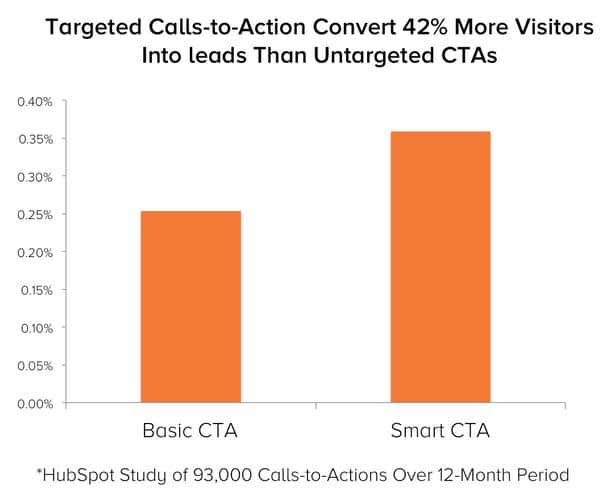As we all entrench ourselves into the current “circles” mania, it’s important for in-house SEOs to add IT into their “SEO Circle.” But how?
As we all entrench ourselves into the current “circles” mania, it’s important for in-house SEOs to add IT into their “SEO Circle.” But how?
Traditionally, marketing-IT relationships are tumultuous, with both having differing viewpoints on how things should get done. Sometimes it even feels that marketers and IT folks operate on different planets.
With roughly 65 percent of SEOs sitting in the marketing department, a SEO’s relationship with IT also becomes tumultuous (by way of association!). However, this barrier between IT and SEO can be broken down.
The TEAM Approach
One great way to start breaking down this barrier is to use a method recommended by Forrester Research: the TEAM approach. TEAM approach means:
1. Transparency
Have open communication with your IT group. Many times, due to our corporate speak, we miss out on the importance of having a heart to heart conversation with the IT group. Help them understand your SEO needs and why they are critical to the business. Start with education. Be transparent about what you plan to do and how IT fits into that plan. Getting IT support is crucial.
2. Embedded Groups
This isn’t just applicable to marketing groups, but SEO too. If a certain project needs IT support, then spend more time with IT group – and if higher-ups permit, even embed yourself with IT group for a specific project. You’ll see that the benefits coming out of this shared project model is huge. Your projects will move faster with less errors and production level defects.
3. Alignment
Find a common cause that IT and marketing can focus on. This is so true when it comes to SEO. Showing the financial benefits of optimization creates a common focus for both groups. After all, even IT would love to contribute to the financial success of your company.
4. Management Buy-in
IT and marketers should highlight the strategic importance of the online channel and create opportunity for the IT group to become an integral part of overall marketing strategy. In search, this can be achieved by taking in your current traffic, conversion, and revenue data from SEO and then creating forecast based on the increased SEO activity. This will help create a financial model that you can jointly present to management and create buy-in from your management.
In essence, don’t wage this battle alone. Make IT an integral part of all future SEO projects.
5 Steps to Further Strengthen the SEO-IT Relationship
Ready to go above and beyond the TEAM approach? There are certain steps that SEOs should take in order to succeed.
1. Educate and Invest
Education is the best investment that SEOs can make while working with IT group. Nine out of 10 times it’s not that IT isn’t interested in moving your SEO initiatives ahead, but rather a simple lack of awareness as to how their work impacts SEO.
Because search marketing has become one of the important drivers for growth in today’s digital economy, it’s important for IT to learn about search marketing. Make it a point to train IT about the main components of SEO. Teach them everything about search, from the current landscape to effective link building and everything in between.
Just as with keyword research — where our goal is to align our language with the searcher — we need to align our language with IT so we both are talking the same language. SEO education is a good place to start.
2. Make a Business Case
Business cases are not just important to get management buy-in but also for IT. In order for your SEO initiatives to move forward, it is important that you attach a business value — especially now, given the shrinking budgets.
This is where the search intelligence comes into play. When communicating the financial benefits, use metrics that are acceptable at your company, like value per visitor, LTV, profit per sale, or cost per acquisition. Share with IT the financial side of your work and the probable impact it would have on company revenues.
In many instances, creating a sample financial worksheet can add further weight. Be sure to include your current keyword ranking, traffic forecast, revenue forecast, and overall ROI. Add your search projections, and show the total revenue increase that your company can realize by moving the project forward. Create a sample SEO model such as this one:

3. Include SEO Best Practices in Guidelines
A great way to ensure that developers and IT are aligned with your SEO initiatives is to include your SEO best practices in your site development guide for IT. This way, they understand some basic SEO best practices like URL naming convention, directory structures, coding best practices, dynamic content, common redirects, length of title, and uses of JavaScript.
With these kinds of elements in your development or site building guidelines, you won’t have to reinvent the wheel each time a new project comes along. This in turn allows you to focus on higher level strategic initiatives.
4. Empower IT With Tools
Share with IT some common SEO tools that you use. This will help them understand the value of the work they do and how it translates on the search engines.
Sharing tools also helps you sell them on an SEO idea more quickly. Webmaster Central can be a great place to start, as it will give IT a glimpse of what search engines see and allow them to quickly identify some low-hanging fruits. Another tool you can share is XENU.
5. Decode “Geeky” SEO Language Into “Geeky” IT Language
Most of the time, disconnects between IT and SEO happen because we both speak our own brand of “geeky” language. Instead, break down your SEO speak into common IT speak.
Here are the most common examples that I have come across:
- “Our PageRank is low”: PageRank who? PageRank is great everyday SEO speak, but not for your IT. For better clarity: “Strength of your web page.”
- “Domain canonicalization”: Very Googly indeed! This one’s sure to invite some blank stares from your IT folks. Its part of SEO vocabulary, but it’s not good enough for IT. Use simpler terms: “Being consistent with ‘www’ or ‘non-www’.”
- “Link juice”: Some SEOs feel empowered after they say “link juice,” but not when IT is around. They might think of it as a new soft drink flavor in the market, and no one told them about it! Instead, decode this as: “Part of website URL redirects.”
- “Search engine saturation”: Essential SEO speak, but not for your IT. Instead, say: “Number of site pages that are indexed in a search engine’s database.”







